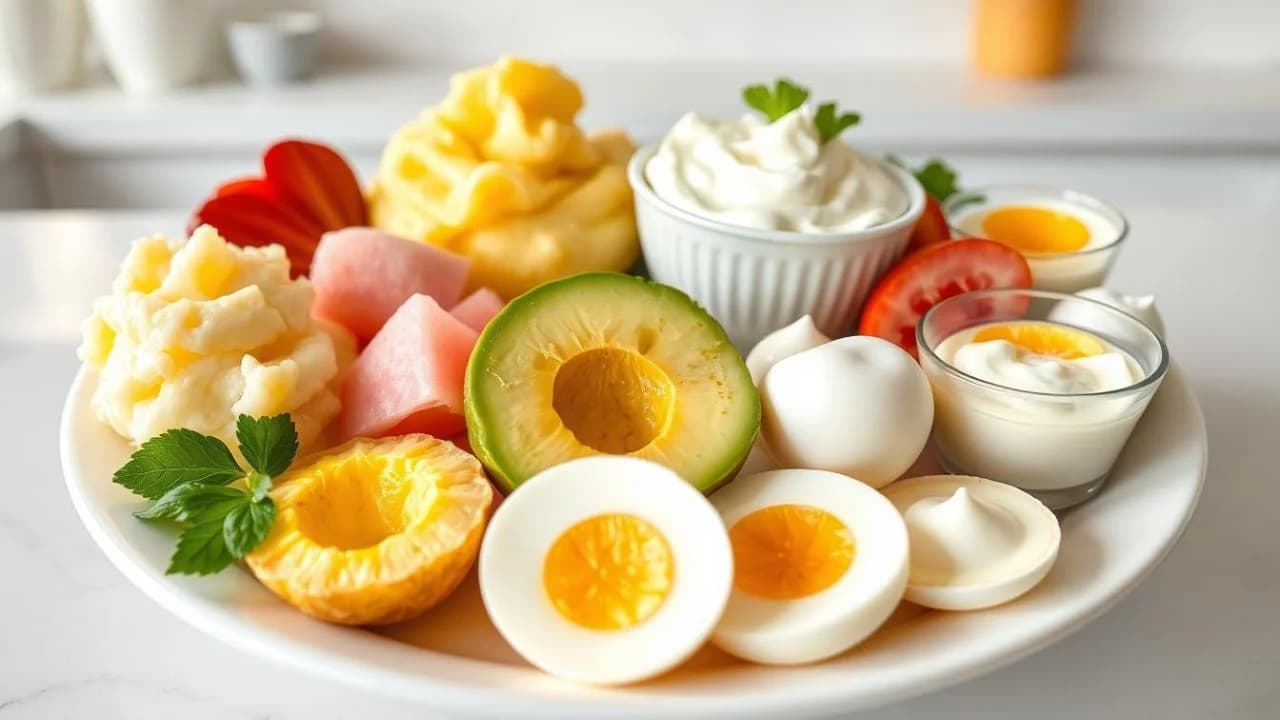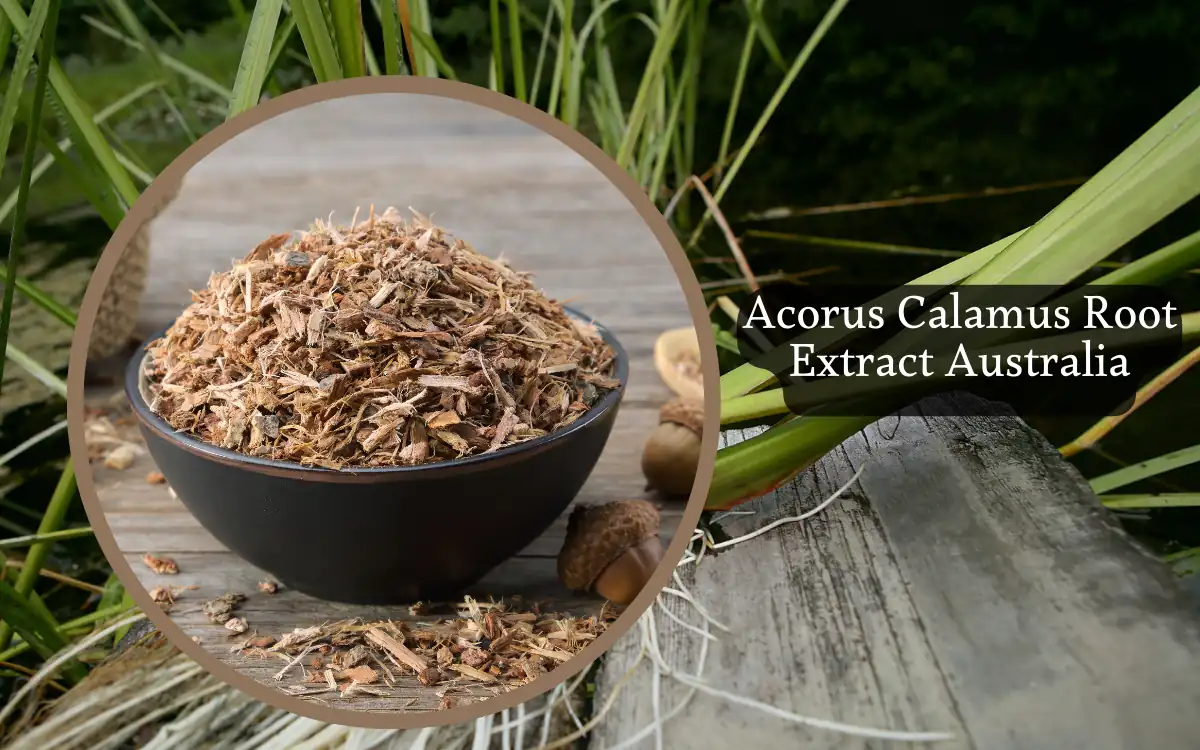It’s funny how something as small as a tooth can turn your whole week upside down. The first few days after a wisdom tooth extraction often feel like a blur — a mix of soreness, gauze, and that strange hollow feeling in your jaw. And during that time, what you eat… honestly matters more than most people realize.
The right things to eat after wisdom teeth removal can help your body heal faster, reduce swelling, and even lower your risk of oral infection or a dreaded dry socket.
Your mouth is basically a healing wound — delicate, sensitive, and still trying to figure out how to close itself up. This is why soft or liquid-based foods become your best friends for a while.
Smooth foods like mashed bananas, Greek yogurt, bone broth, or a gentle protein shake not only prevent irritation but also give your body nutrients for tissue repair and clot healing.
And here’s something most people forget — the first 24 to 72 hours are critical. That’s when your gums are forming a protective layer, and even a single piece of crunchy food (yes, a chip counts) can disturb the healing tissue. So you’ll want to treat your meals more like medicine for now — soothing, nourishing, and gentle on the mouth.
I. Understanding the Things to Eat After Wisdom Teeth Removal
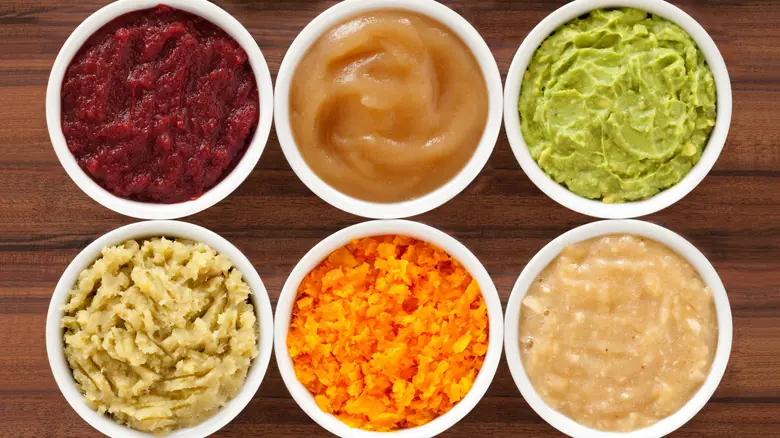
Now, before diving deeper into what’s actually safe to eat, it helps to understand what your mouth is going through. The truth is, wisdom teeth removal recovery foods aren’t just about texture — they’re about timing. Your gums and jaw are doing this complicated dance of wound healing, inflammation control, and gum tissue repair.
Right after your tooth extraction surgery, the body rushes to form a clot at the site — like a tiny scab inside your mouth. This clot protects the bone and nerve endings underneath. If it gets dislodged (often from chewing or sipping through a straw), it can lead to dry socket, which is as painful as it sounds.
That’s where nutrients quietly step in. Proteins, vitamin C, vitamin A, and zinc are like backstage crew members helping with tissue regeneration and keeping infection away. Foods like soft fish, Greek yogurt, or even mashed avocado offer both comfort and essential nutrition without irritating the healing site.
You might notice swelling or stiffness in your jaw — that’s just the inflammatory phase. It usually peaks around day two, then slowly fades. A good post-surgery inflammation diet (think soups, smooth foods, and hydrating liquids) helps shorten that phase.
Honestly, I remember after my own Ridgewood Oral Surgery, my dentist said, “Eat like a baby for three days — your gums will thank you.” And weirdly, that advice stuck. Because the moment I stopped trying to rush back to “normal,” my healing time improved.
Pro Tip: Skip sticky or chewy foods for at least a week. Even semi-solid foods like pasta or bread can stretch the surgical site too early. Focus on smoother, nutrient-rich options that support gum tissue healing instead.
II. Best Soft Foods to Eat After Wisdom Teeth Removal
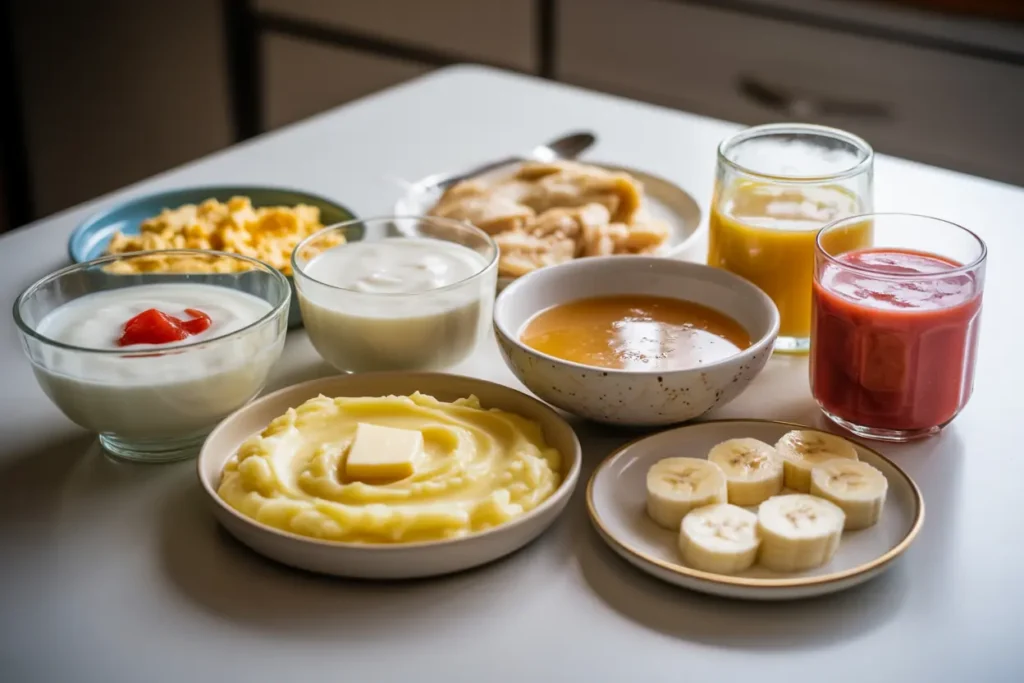
Let’s be honest — eating after oral surgery feels… awkward. You want something satisfying but not risky. And this is where soft foods to eat after wisdom teeth removal really come in clutch. They’re gentle, healing, and honestly kind of comforting when your mouth feels like it’s been through a mini storm.
When your third molars are gone, the gums underneath are still tender. That’s why your meals should focus on smooth foods and semi-solid foods that don’t require chewing or stretch the jaw too much. You can still enjoy flavor — you just have to find it in a softer form.
1. Smooth and Creamy Foods
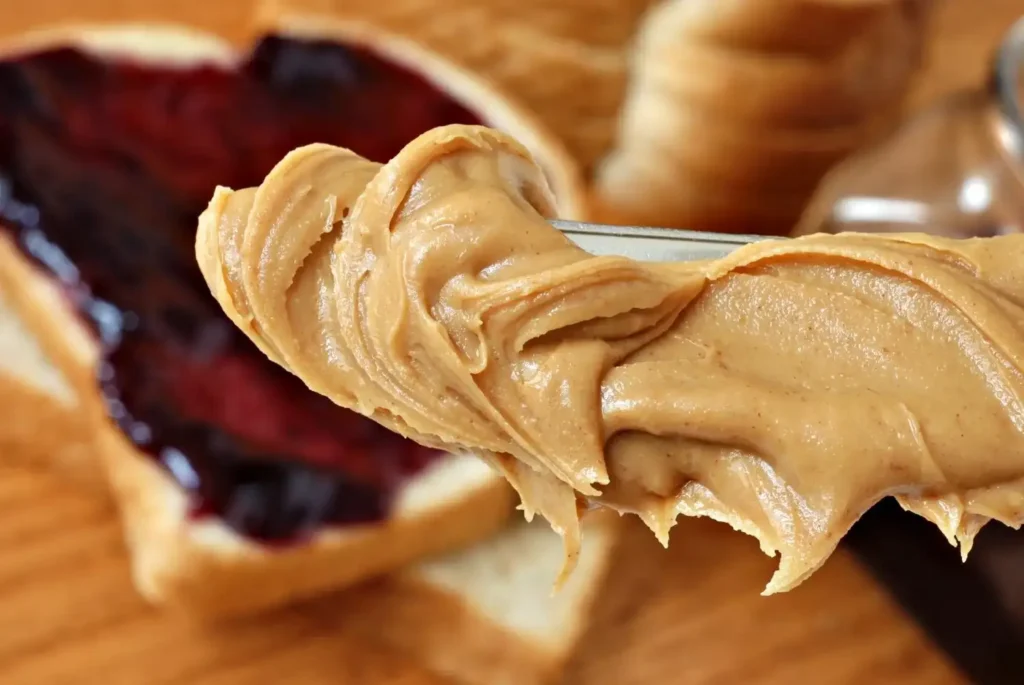
There’s a strange kind of peace in eating food you don’t need to chew. Maybe it’s because your body knows you’re healing. Here are some favorites that make recovery a little easier:
- Greek yogurt: rich in protein and best probiotics, good for gum disease prevention.
- Mashed potatoes: warm, comforting, and perfect for those “I just want real food again” moments.
- Applesauce: light, soothing, and easy to swallow even with swollen cheeks.
- Cottage cheese: soft and packed with calcium for bone healing.
- Mashed banana or ripe bananas: naturally sweet and rich in potassium for tissue repair.
You could even blend your favorites into a kind of soft “comfort bowl.” For example, mix mashed sweet potatoes with Greek yogurt and a drizzle of honey — smooth, nutrient-rich, and gentle on your healing tissue.
2. Protein-Rich Recovery Foods
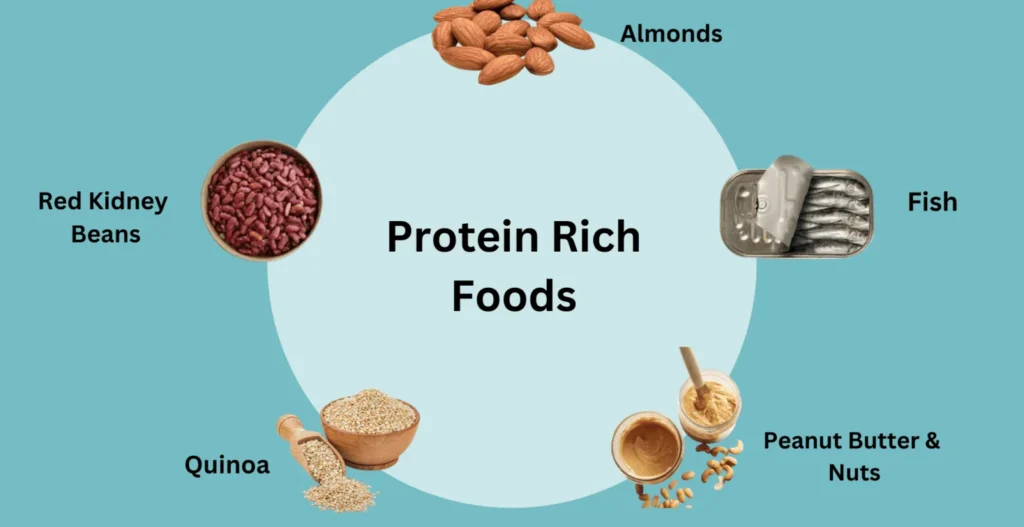
When you’re healing, protein isn’t just for gym buffs. It’s the foundation of your recovery. During the wisdom tooth extraction phase, your body works overtime to rebuild tissue and reduce inflammation — and protein does the heavy lifting.
Try these easy-to-eat options:
- Scrambled eggs (light and fluffy)
- Soft tofu or silken tofu (excellent plant-based protein)
- Protein shakes or protein smoothies made with milk or coconut water
- Flaked soft fish like salmon or cod
- Creamy lentils or pureed beans
If you’re unsure how much protein to get, a quick rule of thumb: aim for around 20–25 grams per meal during recovery. Your gums — and honestly, your energy levels — will thank you for it.
Pro Tip: Add a spoonful of collagen powder to your smoothie. It supports clot healing and helps repair connective tissue faster.
Sample Soft Food Mix & Match Table:
| Meal | Options | Healing Benefit |
| Breakfast | Scrambled eggs + yogurt | Protein + probiotics for recovery |
| Lunch | Mashed avocado + soft fish | Healthy fats + omega-3s for inflammation |
| Snack | Applesauce or mashed banana | Gentle on gums + potassium for repair |
| Dinner | Blended soup or bone broth | Hydration + nutrient absorption |
III. Hydration and Healing: What to Drink After Wisdom Teeth Removal

If there’s one thing most people underestimate after wisdom tooth extraction, it’s hydration. You can skip chewing for a few days, sure — but don’t skip fluids. Knowing what to drink after wisdom teeth removal is just as important as knowing what to eat.
Fluids do more than quench thirst — they keep your blood circulating properly, help deliver nutrients to your healing gums, and even reduce the risk of oral infection. But there’s a small catch: how you drink matters just as much as what you drink.
1. The Role of Fluids in Healing
Avoid straws at all costs (seriously). When you use a straw, the suction can dislodge the protective clot that forms after your tooth extraction surgery — leading to dry socket. Instead, sip slowly from a cup or use a spoon for thicker drinks like smoothies.
Hydration also supports your immune system. Water helps flush out toxins, while electrolyte drinks can replace what you lose if you’re taking medication or not eating much.
2. Best Drinks for Recovery
Here’s what to reach for when your mouth feels dry, sore, or just plain tired:
- Water: always your best bet for infection prevention and clot healing.
- Coconut water: loaded with electrolytes, gentle on the stomach.
- Herbal teas: chamomile or peppermint can calm inflammation.
- Broth soups: bone broth or vegetable broth keeps you nourished when chewing isn’t an option.
- Protein shakes: ideal if you can’t handle solids yet — just skip the straw.
- Milk or lactose-free alternatives: great source of calcium for bone strength.
You could even rotate drinks throughout the day: start with water in the morning, a protein shake mid-morning, broth soup for lunch, and herbal tea in the evening. Keeps things interesting — and your hydration on point.
Pro Tip: Add a pinch of salt and a squeeze of lemon to warm water (if tolerated). It can soothe your throat, especially if swelling makes swallowing uncomfortable.
Quick Drink Reference Table:
| Drink Type | Benefits | Notes |
| Coconut Water | Rehydrates and restores minerals | Avoid flavored or sugary versions |
| Bone Broth | Nutrient-dense and soothing | Great for early healing days |
| Herbal Tea | Reduces inflammation | Drink lukewarm, not hot |
| Protein Shake | Boosts energy and repair | Avoid seeds or textures |
So yeah, even when you can’t chew much, you can still “feed” your body what it needs to recover — one careful sip at a time.
IV. Foods to Avoid After Wisdom Teeth Removal
So, here’s the thing — knowing what not to eat after a wisdom tooth extraction might be even more important than knowing what’s safe. I get it, though — cravings hit hard when you’re stuck on a soft food diet. But some foods are sneaky troublemakers, and honestly, they can set your recovery back days.
After surgery, your mouth is a fragile landscape — open tissue, a forming clot, healing gums — and even one wrong bite of crunchy food can disturb all that progress. Think of it like a construction site. You wouldn’t drive over wet cement, right? Same goes for chewing too soon.
1. The Usual Suspects: Foods to Steer Clear Of
Here’s what your family dentist or Edmonton dentists would probably tell you to skip (and they’re right):
- Crunchy or hard foods: chips, popcorn, nuts, toast — anything that could scrape or wedge into the wound.
- Sticky or chewy foods: caramels, candies, gum — they pull at your stitches and slow clot healing.
- Spicy foods: They may feel tempting, but can irritate fresh tissue and trigger inflammation.
- Acidic or hot foods: citrus, vinegar-based sauces, and steaming soups can burn or sting the healing area.
- Alcohol or soda: both interfere with wound healing and increase infection risk.
- Grains and seeds: they tend to get stuck in extraction sites — small but mighty annoyances.
Sometimes, it’s not just about the texture but also about the temperature and timing. Even soft foods can be risky if eaten too soon — like oatmeal or rice during the first 24 hours.
Pro Tip: If you’re unsure whether a food is safe, ask yourself two questions: Can I swallow it without chewing? And would it hurt if it touched an open wound? If either answer’s “yes,” skip it (for now).
2. Why Avoiding Certain Foods Matters
Every choice you make in these few days affects how fast you heal. Hard or chewy textures can reopen wounds, while spicy and acidic ingredients can delay gum tissue repair. And honestly, nobody wants to end up back at Creekview Dental for an emergency check because a tortilla chip derailed recovery.
Keep it simple. Keep it soft. You’ll be back to your favorite meals soon enough — just not yet.
Quick Reminder Table:
| Type | Avoid | Reason |
| Crunchy | Chips, nuts, popcorn | Irritates healing gums |
| Sticky | Gum, caramel, taffy | Pulls at sutures |
| Spicy | Hot sauces, chili | Increases inflammation |
| Acidic | Citrus juice, vinegar | Stings open wounds |
| Fizzy/Alcoholic | Soda, wine, beer | Delays clot healing |
V. 3-Day Healing Meal Plan (Day-by-Day Guide)
When you can’t chew, even a spoonful of soup starts feeling like a victory. Planning your meals ahead — a simple wisdom teeth removal meal plan — can save you from frustration (and hunger).
These first few days are all about balance: giving your body recovery-friendly nutrition without overworking your mouth.
Here’s a gentle, realistic way to eat through those first 72 hours.
1. Day 1 – Liquids Only
The first day is all about hydration and calm. The extraction sites are still raw, your healing tissue fragile, and swelling probably hasn’t peaked yet. Stick to pure liquids — no chunks, no chewing, no texture.
Examples:
- Broth soups (bone broth, miso broth, vegetable broth)
- Smoothies with banana, yogurt, and a scoop of protein powder
- Applesauce or mashed banana
- Protein shakes (without seeds or ice)
- Water or electrolyte drinks
If you’re taking pain meds, sip something mild before each dose to avoid nausea.
Pro Tip: Keep a thermos of bone broth nearby. It’s not just hydrating — it supports tissue repair and helps prevent oral infection during the vulnerable early stage.
2. Day 2 – Thicker Soft Foods
By now, swelling might be at its peak, but the soreness starts easing a bit. You can move toward semi-solid foods — still soft, but slightly more filling.
Try this:
- Mashed potatoes or mashed avocado
- Creamy oatmeal or blended soups
- Greek yogurt or cottage cheese
- Scrambled eggs or soft tofu
- Pureed fruits like ripe pears or peaches
Just remember: no straw, no extreme temperatures, and still chew as little as possible.
3. Day 3 – Transitioning to Soft Solids
Your body’s doing some solid gum tissue healing now. You can begin experimenting with gentle textures — but still avoid crunchy foods or anything chewy.
Meal ideas:
- Soft fish (like steamed salmon or tilapia)
- Well-cooked pasta or rice
- Mashed lentils or beans
- Soft pancakes (cut into small bites, no syrup yet)
- Smooth soups with blended veggies
Pro Tip: Don’t rush. Even if you feel ready to chew, your jaw muscles might still be tender. Let clot healing finish before pushing it.
Sample 3-Day Recovery Table:
| Day | Food Examples | Notes |
| 1 | Broth, smoothies, applesauce | Focus on hydration |
| 2 | Mashed potatoes, soft eggs, yogurt | Add more protein |
| 3 | Soft fish, oatmeal, lentils | Begin transition to solids |
By the end of day three, most people notice less swelling, better energy, and that faint urge to chew again — which, honestly, feels like a small victory in itself.
VI. Healing-Boosting Nutrients: What Your Body Needs Most
At some point, your recovery from wisdom tooth extraction becomes less about “what can I eat” and more about “what does my body actually need right now.” It’s not just about texture anymore — it’s about giving your system the raw materials it craves for wound healing, tissue repair, and energy restoration.
When you think about the best things to eat after wisdom teeth removal, it’s not a mystery. Your body works like a repair team — every nutrient has a job, from sealing wounds to calming inflammation.
1. The Nutrient Dream Team
Here’s a breakdown of what actually fuels your recovery (and maybe even makes you feel human again):
- Protein – The building block of new tissue. Found in Greek yogurt, protein shakes, soft eggs, and cottage cheese.
- Vitamin C – Helps with collagen production and gum tissue repair. You’ll get plenty from mashed bananas, smoothies, or even pureed fruits.
- Zinc – The behind-the-scenes hero that helps fight oral infection. Try mashed lentils or soft fish.
- Vitamin A & K – Support faster wound healing and strengthen your immune defenses. You’ll find them in blended spinach soups or avocado.
- Omega-3 fatty acids – Found in soft fish like salmon; these calm inflammation naturally.
When you’re on a soft or liquid-based foods diet, your body’s working overtime to heal, so you might even feel more tired than usual. That’s normal. These nutrients are like quiet reinforcements, restoring strength from the inside out.
Pro Tip: If you can’t eat much, add a scoop of unflavored collagen powder or protein isolate to your morning smoothie. It helps healing tissue rebuild without needing to chew a thing.
Quick Reference Table – Nutrients That Speed Healing
| Nutrient | Best Soft Food Source | Healing Benefit |
| Protein | Greek yogurt, tofu, eggs | Repairs muscle and gum tissue |
| Vitamin C | Mashed fruits, smoothies | Boosts collagen formation |
| Zinc | Lentils, soft fish, beans | Strengthens immune function |
| Omega-3 | Salmon, chia seed smoothie | Reduces swelling and pain |
| Vitamin A | Avocado, pureed carrots | Helps cell regeneration |
VII. Smoothie & Soup Recipes for Easy Recovery
Let’s be honest, when chewing is off the table, blending becomes your best friend. Smoothies and soups aren’t just convenient; they’re lifesavers when your jaw feels like it’s been through a storm. And when done right, they can be as filling and healing as any full meal.
Smoothies are perfect because you can sneak in nutrients without chewing. You can go sweet, savory, high-protein, or totally indulgent (yes, even peanut butter versions — as long as it’s smooth).
1. Nutrient-Packed Smoothies
Try these ideas — they’re soft, soothing, and made for the wisdom teeth removal recovery phase:
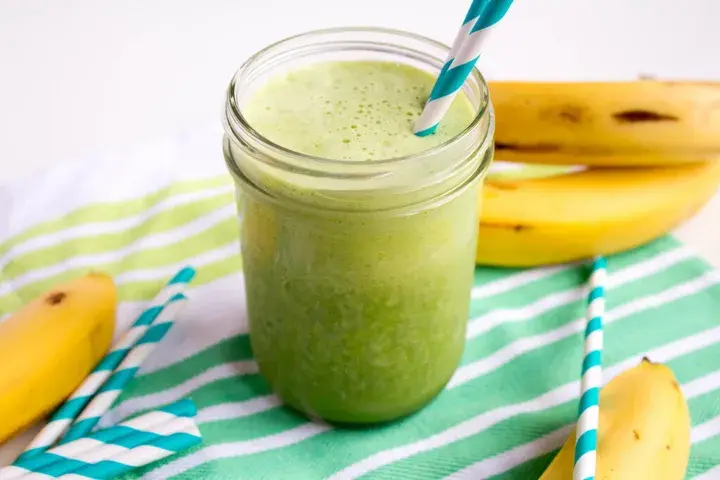
- Banana-Spinach Protein Smoothie
- 1 ripe banana
- 1 handful of spinach (blended well)
- 1 scoop of protein powder
- ½ cup Greek yogurt
- 1 cup coconut water
- 1 ripe banana
- → Supports tissue healing, boosts energy, and keeps your mouth hydrated.
- Berry-Yogurt Recovery Shake
- ½ cup blueberries (fresh or thawed, no seeds)
- ½ cup Greek yogurt
- ½ banana
- 1 tbsp honey
- ¾ cup almond milk
- ½ cup blueberries (fresh or thawed, no seeds)
- → Loaded with antioxidants and gentle on sore gums.
- Vanilla Oat Smoothie
- ½ cup cooked oats (cooled)
- 1 scoop vanilla protein powder
- 1 tbsp peanut butter (smooth only)
- 1 cup milk or soy milk
- ½ cup cooked oats (cooled)
- → Filling, soothing, and ideal for mornings when you’re tired of soup.
Pro Tip: Blend longer than usual — about 60 seconds more — so your smoothie has no grit or small fruit bits that might irritate the healing gums.
2. Healing Soups
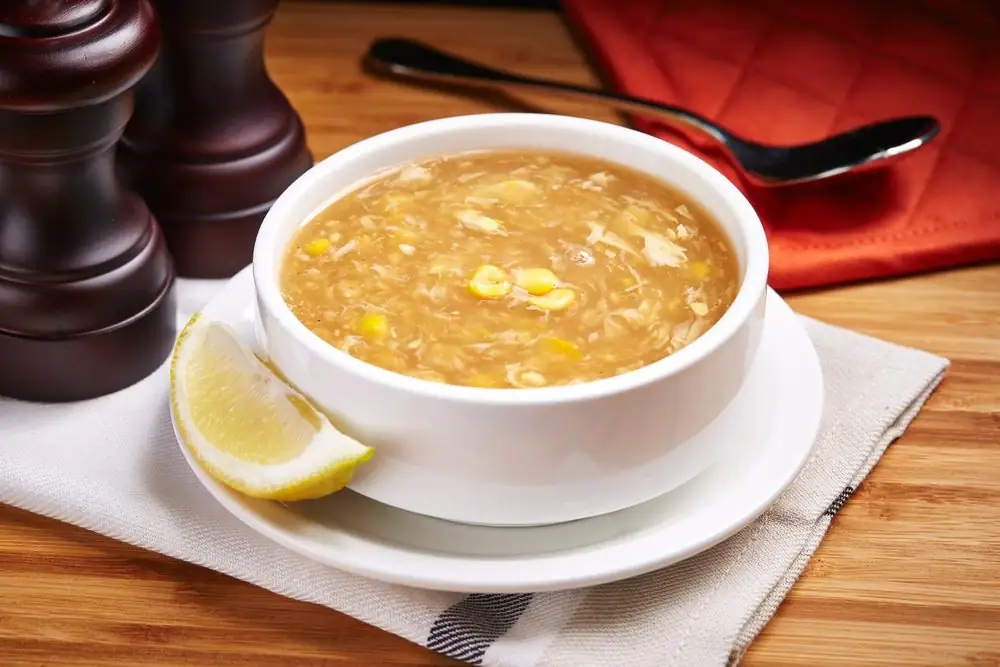
And soups… they’re the warm hug your mouth needs. Go for blended versions — thick enough to satisfy, but smooth enough to sip.
- Creamy Pumpkin Soup: High in vitamin A, easy on gum tissue, and surprisingly sweet.
- Lentil Broth Soup: Soft texture, rich in protein and zinc for tissue repair.
- Bone Broth: Classic go-to for post-wisdom tooth extraction — hydrates while promoting clot healing.
Sample Soup & Smoothie Table:
| Type | Recipe | Healing Focus |
| Smoothie | Banana-Spinach | Vitamins + Protein |
| Smoothie | Berry-Yogurt | Antioxidants + Soothing |
| Soup | Pumpkin | Vitamin A + Warmth |
| Soup | Bone Broth | Hydration + Clot Recovery |
You can mix it up — smoothies in the morning, soups by evening. Both keep your recovery varied, gentle, and somehow… comforting.
VIII. Managing Pain and Swelling with Food Choices
During the first few days after your wisdom tooth extraction, it’s less about flavor and more about comfort. Every spoonful should help calm inflammation, ease pain, and keep your mouth feeling soothed — not sore. That’s where your food choices quietly make the biggest difference.
When thinking of things to eat after wisdom teeth removal, you want foods that are soft, cold, and non-acidic. These help minimize irritation and can even help control swelling from the inside out.
1. Foods That Calm and Cool
- Cold smoothies – Cooling and hydrating; choose mild fruits like banana or mango.
- Greek yogurt – Packed with probiotics that fight oral bacteria and calm inflammation.
- Mashed avocado – Rich in healthy fats that reduce swelling and nourish the gums.
- Unsweetened applesauce – Naturally soothing and gentle on sensitive tissues.
- Soft oatmeal (cooled) – Eases hunger without tugging at the healing site.
And while it’s tempting to test your limits early, hot foods can increase swelling by dilating blood vessels — not ideal when your mouth already feels tender. Stick to room temperature or chilled meals for a while.
Pro Tip: If you wake up with swollen cheeks, avoid salty foods or chips — sodium causes your body to retain fluid, making puffiness worse. Instead, go for hydrating options like smooth soups, water-rich fruits, and herbal teas cooled to a safe temperature.
2. Natural Soothing Add-Ons
| Ingredient | Benefit | Best Way to Consume |
| Aloe vera gel (edible) | Soothes inflamed tissue | Mix a tsp into smoothies |
| Chamomile tea | Reduces swelling, calms nerves | Sip cool, not hot |
| Turmeric powder | Anti-inflammatory | Add ¼ tsp to soups or shakes |
| Coconut water | Rehydrates and reduces puffiness | Drink chilled |
You might not notice it immediately, but the foods you eat (and avoid) shape your comfort level more than painkillers sometimes do. Cool, soft, and anti-inflammatory — that’s the quiet trio for comfort.
IX. When and How to Reintroduce Solid Foods
After a few days, your mouth begins to whisper, “I miss texture.” And honestly? That’s a good sign. It means your gums are starting to heal and your body’s ready for something beyond yogurt and soups. Still, rushing into crunchy or chewy foods too soon can reopen wounds or dislodge clots — the last thing you want during wisdom teeth removal recovery.
1. The Gradual Transition
Think of your healing like a gentle ladder. You don’t jump from liquid to steak overnight.
Here’s a simple step-by-step way to reintroduce solid foods safely:
- Days 1–3: Stick with liquids and purees only — smoothies, yogurt, and blended soups.
- Days 4–6: Add soft foods like mashed potatoes, scrambled eggs, oatmeal, and cottage cheese.
- Days 7–10: Test semi-solids such as pancakes, pasta, and finely shredded chicken.
- After 2 weeks: Gradually return to regular foods, chewing on the opposite side first.
Pro Tip: Always rinse gently with warm salt water after meals (but not within 24 hours post-surgery). It prevents food debris from collecting in the socket and keeps your healing gums infection-free.
Table: Safe-to-Add Foods by Recovery Stage
| Day Range | Texture Level | Example Foods | Why It Helps |
| 1–3 | Liquid/Puree | Smoothies, soups, applesauce | Easy to swallow, no chewing |
| 4–6 | Soft | Mashed potatoes, eggs, oatmeal | Gentle texture, adds energy |
| 7–10 | Semi-solid | Pasta, soft rice, pancakes | Introduces light chewing |
| 10+ | Regular | Chicken, cooked veggies, rice bowls | Restores normal eating |
2. What to Avoid (Still)
Even if you feel better, stay away from:
- Crunchy foods like chips or nuts
- Spicy or acidic meals
- Sticky or chewy items like caramel or gum
- Alcohol or smoking (both slow healing dramatically)
Healing is gradual, but the small wins — the first bite of soft pasta, the first warm soup that doesn’t sting — they matter. Give your gums time to rebuild their strength; your patience now means fewer setbacks later.
X. Common Mistakes to Avoid After Wisdom Teeth Removal
Even when you’ve planned your meals and stocked your fridge with soft foods, recovery after a wisdom tooth extraction can trip you up if you’re not careful. The truth is — what you don’t eat or how you eat can sometimes matter just as much as the things to eat after wisdom teeth removal.
Here’s where many people (understandably) go wrong:
1. Eating Too Soon
That first post-surgery hunger pang can tempt you into trying solid food too early. But your healing gums are fragile — chewing before the clot seals properly might cause a painful dry socket.
2. Using Straws
It’s such a small thing, but the suction from drinking through a straw can literally pull your blood clot loose. Stick to sipping directly from a cup for at least a week.
3. Hot or Spicy Foods
Warm meals feel comforting, but hot food increases swelling. Spicy dishes, on the other hand, can sting and irritate the surgical site — especially during the first 3–5 days.
4. Forgetting Hydration
Dehydration slows down gum tissue repair and increases discomfort. Keep sipping water or coconut water regularly, even if you don’t feel thirsty.
5. Skipping Meals
Skipping food might feel easier when you’re sore, but your body needs energy and protein for recovery. A missed meal slows healing and can make pain meds hit harder on an empty stomach.
Pro Tip: Always test food temperature before eating. Even warm soup can feel hot on a healing gum line — when in doubt, let it cool for five minutes longer than you think necessary.
Quick Mistake-Check Table
| Mistake | Why It Hurts Healing | What To Do Instead |
| Eating solids early | Dislodges blood clot | Wait 5–7 days |
| Using straws | Creates suction | Sip from cup |
| Hot/spicy food | Increases swelling | Stick to cool or mild meals |
| Skipping hydration | Slows healing | Drink water, coconut water |
| Skipping meals | Weakens recovery | Eat small soft portions |
Avoiding these mistakes makes your recovery smoother, faster, and less stressful — and that’s exactly what you need when every bite counts.
XI. Best Hydrating Drinks for Faster Recovery

Let’s face it — after a wisdom tooth removal, even swallowing feels like an effort. Hydration becomes tricky because you can’t gulp, chew, or use a straw comfortably. But staying hydrated isn’t optional; it’s crucial for reducing swelling, keeping your mouth clean, and speeding gum healing.
Here are some of the best hydrating drinks to include during your recovery — soothing, nutrient-rich, and gentle on tender tissues:
1. Top Hydrating Choices
- Coconut Water – High in electrolytes, keeps your mouth moist, and helps replenish minerals lost during surgery.
- Aloe Vera Juice (unsweetened) – Natural anti-inflammatory that calms oral tissues and promotes wound healing.
- Diluted Smoothies – Thinner versions of your recovery smoothies (like banana-yogurt blends) for easier sipping.
- Herbal Teas (chamomile or mint) – Cool them down before drinking to ease pain and reduce swelling.
- Watermelon Juice – Naturally hydrating and rich in vitamin C — just strain it well to remove pulp.
- Plain Water (still your MVP) – Nothing beats simple hydration for flushing bacteria and keeping healing steady.
Pro Tip: Skip carbonated drinks and juices with citrus (like orange or lemon) — they can sting your healing gums and disrupt blood clots.
2. Hydration Frequency Table
| Time of Day | What to Drink | Why It Helps |
| Morning | Coconut water | Restores electrolytes |
| Midday | Herbal tea or diluted smoothie | Keeps energy up |
| Afternoon | Plain water | Prevents dryness |
| Evening | Aloe vera or light juice | Soothes before rest |
If you find drinking painful, use a small spoon or take tiny sips every few minutes — consistency matters more than quantity at once.
When you stay properly hydrated, your mouth heals cleaner, swelling subsides faster, and even sleep improves. It’s a quiet but powerful step in your wisdom teeth recovery diet that too many people underestimate.
XII. Signs You’re Healing Well After Wisdom Teeth Removal
You’ll probably wonder — how do I even know if my gums are healing properly? Honestly, it’s not always easy to tell because progress happens quietly. But there are a few subtle cues your body gives you after a wisdom tooth extraction that tell you things are on track.
Here’s what a healthy recovery usually looks like:
✅ 1. Reduced Swelling and Tenderness
By day three or four, the puffiness should start easing up. If your cheeks feel less sore and you can open your mouth a little wider without discomfort — that’s your cue that the tissue repair process is kicking in.
✅ 2. The Clot Is Stable
That dark spot where the tooth once was? It’s not something to worry about — it’s a good sign. That’s the blood clot protecting your bone and nerve endings as healing continues underneath. At places like Ridgewood Oral Surgery or Creekview Dental, dentists often call it the body’s natural “bandage.”
✅ 3. Gradual Pain Reduction
A dull ache or mild soreness is normal, but sharp, worsening pain might mean a dry socket or irritation. As long as your discomfort steadily lessens — especially when you stick to soft or liquid-based foods — you’re in the clear.
✅ 4. No Bad Taste or Odor
Healing gums shouldn’t have a foul smell. If your mouth tastes clean (especially after gentle rinsing with saltwater), that’s another quiet win for your recovery.
✅ 5. Energy Returning
You’ll notice small things — sleeping better, less fatigue, maybe even craving a protein shake or mashed banana again. That’s your system signaling balance.
Pro Tip: If you’re unsure whether your progress is normal, take a quick dental selfie (carefully) and send it to your family dentist or Edmonton dentist. A visual check can often catch small issues before they turn serious.
Simple Healing Timeline
| Day | What’s Happening | What to Eat |
| 1–2 | Clot forms | Liquids, broth soups |
| 3–5 | Swelling decreases | Mashed potatoes, soft eggs |
| 6–10 | Gum tissue repair | Smooth fish, cottage cheese |
| 11–14 | Mild soreness only | Soft pasta, steamed veggies |
| 15+ | Normal recovery | Slowly reintroduce solids |
So if you’re moving through those phases — even imperfectly — give yourself credit. Healing isn’t a straight line; it’s more like a slow rhythm your body learns on its own time.
XII. When to Call Your Dentist (Red Flags You Shouldn’t Ignore)
Now, here’s the tricky part: sometimes recovery looks fine until suddenly, it’s not. You don’t want to panic over every twinge, but you also shouldn’t wait if something feels off. After wisdom teeth surgery, even small complications can spiral fast if left unchecked.
Here are a few clear signals you should call your family dentist or oral surgeon:
🚩 Persistent or Worsening Pain
Pain should taper off after the third day. If it spikes again — especially with a throbbing sensation — it might be a dry socket or oral infection.
🚩 Swelling That Comes Back
It’s normal for cheeks to puff up, but swelling that reappears after it’s gone down could mean infection or trapped fluid near the surgical site.
🚩 Bleeding That Doesn’t Stop
A little pink saliva? Totally fine. But heavy bleeding after the first 24 hours is not. Use a damp gauze pad, apply gentle pressure, and call your dentist in Edmonton or local oral care provider if it doesn’t stop.
🚩 Bad Odor or Taste
A foul taste or strong smell from your mouth can signal an infection or decaying clot. It’s best to get a quick dental clean or checkup to prevent worse issues.
🚩 Fever or Difficulty Opening Mouth
If you can’t open your mouth without strain or feel feverish, that’s your body waving a red flag. Sometimes, infections spread beneath the gum line and need professional treatment.
Pro Tip: Keep your dentist’s contact info saved — whether it’s Ridgewood Oral Surgery or Creekview Dental. Most clinics have emergency lines for post-extraction patients; don’t hesitate to use them if something feels “off.”
Quick Emergency Reference
| Symptom | Possible Cause | What To Do |
| Sharp pain, empty socket | Dry socket | Call dentist immediately |
| Re-swelling after 5 days | Infection | Cold compress, contact clinic |
| Bad taste/smell | Bacterial buildup | Gentle rinse, book appointment |
| Continuous bleeding | Poor clot healing | Replace gauze, seek help |
| Fever or stiffness | Oral infection | Visit urgent dental care |
It’s easy to brush off mild pain as “just healing,” but early action saves you from a week of misery. If something doesn’t sit right — trust your gut.
XII. Eco-Friendly & Mindful Recovery Choices
You probably don’t think much about sustainability when you’re sitting there, jaw sore, half-asleep, and sipping a cold smoothie after your wisdom teeth removal. But, honestly, this recovery phase can teach you a lot about slowing down — not just for your gums, but for the planet too.
Every little choice adds up: the packaging from your protein shakes, the disposable spoons, the single-use straws. If you’re already rebuilding your diet and routines, why not make those small shifts toward something more mindful?
🌿 Simple Eco-Friendly Recovery Tips
- Choose Reusable Utensils: Bamboo or stainless steel spoons, silicone straws (but wait until you’re healed before using them), and glass jars for smoothies — better for you and the planet.
- Go Local and Organic: Locally sourced bone broth, fresh ripe bananas, or cottage cheese from a small dairy often have fewer preservatives and travel miles, meaning fewer chemicals during recovery.
- Plan Small Batches: Cook or blend just what you need. Wasted soft foods spoil quickly and can attract bacteria — not ideal for open surgical wounds.
- Compost Food Waste: Mashed fruit peels, veggie leftovers, and even herbal tea bags can go straight into your compost instead of the trash.
Pro Tip: Try freezing extra broth soups or smooth foods in small portions using reusable silicone cups. It keeps your meals fresh and saves you the effort of cooking when you’re too tired to move.
Mindful Eating — A Recovery Habit Worth Keeping
You might find that chewing less, eating slower, and actually tasting your food makes you feel more present. That’s mindfulness — the simple act of noticing.
When you choose soft or liquid-based foods thoughtfully — like warm bone broth with herbs, a mild banana smoothie, or even mashed avocado on soft bread (a week later) — you’re caring for your healing body and for the environment.
| Sustainable Choice | Why It Helps You | Why It Helps the Planet |
| Homemade bone broth | Protein, minerals, gut health | Less packaging waste |
| Local produce | Fresh vitamins for healing | Supports local farmers |
| Reusable utensils | Reduces bacterial contamination | Cuts single-use plastic |
| Composting scraps | Keeps kitchen cleaner | Reduces landfill waste |
Small things, sure. But recovery — like sustainability — isn’t about perfection. It’s about gentle effort, repeated often.
Conclusion
If there’s one takeaway from everything we’ve covered, it’s that healing isn’t just about things to eat after wisdom teeth removal — it’s about how those foods make you feel. A bowl of smooth soup or a spoonful of mashed banana isn’t just soft; it’s safe, nourishing, and a quiet kind of comfort.
The right diet — packed with protein shakes, soft or semi-solid foods, and broth soups — supports clot healing, strengthens gum tissue repair, and protects you from oral infection. Pair that with gentle hydration, mindful rest, and maybe even a touch of gratitude for your body’s patience, and recovery becomes a small act of self-care.
You’ll move from liquid foods to semi-solid meals, from smooth foods to light chewing — step by step, bite by bite. By the time you’re ready for crunchy foods again, your gums will have done the quiet, invisible work they were designed for.
🦷 Frequently Asked Questions
1. How soon can I eat after wisdom teeth removal?
Usually, you can start sipping liquid foods like broth soups, smoothies, or water a few hours after surgery — once the bleeding slows. Avoid anything hot, crunchy, or chewy for the first 24 hours to protect your blood clot and prevent dry socket.
2. What’s the best first meal after wisdom tooth extraction?
Go for smooth, cool foods like applesauce, mashed bananas, Greek yogurt, or a protein shake. They’re easy to swallow and gentle on healing gums. Most family dentists and clinics like Ridgewood Oral Surgery recommend sticking with these for the first two days.
3. Can I eat eggs after wisdom teeth removal?
Yes — scrambled eggs are one of the best soft or semi-solid foods you can eat. They’re rich in protein, which supports gum tissue repair and overall wound healing. Just make sure they’re not too hot or overly seasoned.
4. Is it okay to drink smoothies or protein shakes?
Absolutely. Smoothies are perfect for recovery — they’re soothing, filling, and customizable. Just skip seeds, nuts, or straws (straws can disturb clot healing). Try a banana-yogurt or spinach protein shake for extra nutrients.
5. What foods should I avoid completely?
Skip crunchy foods (chips, nuts, popcorn), sticky or chewy foods (caramel, candy), and spicy or acidic meals (like salsa or citrus). They can irritate wounds or get trapped in the extraction site. Also, avoid alcohol and smoking — they slow oral tissue repair and increase infection risk.
6. Can I drink coffee or tea after wisdom teeth surgery?
Not right away. Hot drinks can dissolve the protective blood clot and delay healing. Wait 48 hours, then try lukewarm herbal tea or decaf coffee. Chamomile or mint tea helps reduce swelling naturally.
7. How long should I stay on a soft food diet?
Most people follow a soft food diet for about 7–10 days. You’ll start with liquid foods like soups and smoothies, then move to semi-solid foods (mashed potatoes, scrambled eggs, cottage cheese). Gradually reintroduce solids once your pain and swelling fade.
8. How can I speed up the healing process?
Stay hydrated, eat protein-rich foods, and avoid irritation. Include bone broth, Greek yogurt, and soft fish for collagen and amino acids that boost gum healing. Cold foods like smoothies or ice cream can reduce swelling, too.
9. Is it normal for food to get stuck in the extraction site?
It can happen, especially during the first week. Don’t use toothpicks or force water into the socket. Instead, rinse gently with warm salt water after meals (starting 24 hours post-surgery). If it keeps happening, your dental care provider can clean it safely.
10. When can I eat solid food again?
Usually around 10–14 days, depending on your healing time and comfort level. Start with soft pasta, steamed vegetables, or tender chicken. Avoid crunchy foods until your family dentist or Edmonton oral care clinic confirms that your gums have fully healed.

